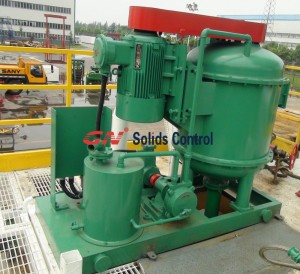Horizontal vacuum degasseris the most common degasser applied at present. A degasser is used in drilling to remove gases from drilling fluid which could otherwise form bubbles. It can remove virtually all entrained gases, including hydrogen sulfide and corrosive oxygen, from drilling fluid and reduce the threat of dangerous and costly blowouts while restoring mud to its original density for reuse in the active mud system.
GN standard ZCQ270 & ZCQ360 can process up to 1200gpm & 1500gpm, for requirement of processing rate less than 1000gpm, ZCQ270 will be your best choice.
Features:
1 skid mounted, compact foot print design
2 Self-Contained, do not need a centrifugal pump for feeding
3 Simple operation
For small amount of entrained gas in a drilling fluid, the degasser can play a major role of removing small bubbles that a liquid film has enveloped and entrapped. In order for it to be released and break out the air and gas such as methane, H2S and CO2 from the mud to the surface, the drilling fluid must pass degassing technique and it can be accomplished by the equipment called degasser which is also a major part of a mud systems.
Working principle of horizontal vacuum degasser
It utilized negative pressure to withdraw entrained gases from the mud. In order for this to work, mud is pumped through a venturi, which develops a negative pressure, thus sucking mud into the unit. The mud then flows over dispersion plates, arranged either horizontally or vertically, creating thin sheets of gas-cut mud. These dispersion plates bring entrained gases closer to the surface for easy removal by a stand-alone vacuum pump.
The choice between horizontally- or vertically-mounted units is typically based on the footprint requirements of the specific rig. The other type degasser is atmospheric degasser, welcome to inquiry us for more info for degassers.
